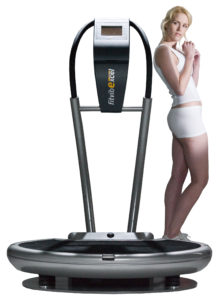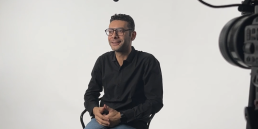Introduction and Awareness Stage
In the realm of fitness, health-conscious individuals are always on the lookout for innovative solutions to enhance their well-being. Enter “FitVibraPro,” a cutting-edge fitness device that combines technology and exercise for a revolutionary workout experience. In this case study, we’ll dissect the FitVibraPro’s journey through the AIDA model, exploring the internal and external factors that shape its success.
Introduction:
FitVibraPro is not just a fitness device; it’s a lifestyle transformation. Designed to provide a comprehensive workout through whole-body vibration technology, it caught the attention of fitness enthusiasts and professionals alike.
Awareness Stage:
External Influences:
- Market Trends: The fitness industry was experiencing a surge in demand for efficient and time-effective workout solutions. FitVibraPro tapped into this trend by offering a unique approach to fitness.
- Social Media Buzz: Influencers and fitness enthusiasts shared their experiences with FitVibraPro on platforms like Instagram and YouTube, generating curiosity and sparking conversations.
Internal Influences:
- Innovative Design: The device’s sleek design and advanced vibration technology set it apart from traditional exercise equipment. Its visual appeal caught the eye of potential customers.
- Strategic Positioning: FitVibraPro positioned itself as a time-efficient solution for busy individuals, highlighting the convenience of a full-body workout in a short period.
Crafting Awareness-Grabbing Content:
To capture attention, FitVibraPro’s marketing team employed a multi-faceted approach:
- Compelling Video Ads: Short video clips showcasing users engaged in dynamic workouts on the device, paired with energizing music, created an engaging visual spectacle.
- Interactive Social Media Campaigns: Quizzes and polls asked questions like, “Tired of long workouts?” and “Want results in minutes?” These posts not only engaged users but also planted the seed of curiosity.
The journey begins with the crucial attention stage, where FitVibraPro strategically leverages external market trends and the influence of social media to garner interest in its innovative fitness device., we’ll explore how FitVibraPro nurtured this interest into a genuine desire among its target audience.

Interest Stage:
External Influences:
Educational Content: The fitness industry is rife with misinformation. FitVibraPro addressed this by creating informative blog posts and videos explaining the science behind whole-body vibration workouts and their benefits.
User Testimonials: Fitness enthusiasts who experienced positive results with FitVibraPro shared their transformation stories on social media and online forums. These authentic stories added credibility and kindled interest among potential customers.
Internal Influences:
Educational Empowerment: FitVibraPro’s marketing team recognized the importance of educating the audience about the device’s mechanisms. They collaborated with fitness experts to create in-depth guides and e-books that explained the science in a user-friendly manner.
Building Trust: The brand’s dedication to transparent communication and the inclusion of scientific research studies in their content built trust among the audience. This trust was instrumental in nurturing interest.
Nurturing Interest into Desire:
Engaging Webinars: FitVibraPro organized live webinars featuring fitness experts who explained the device’s benefits and answered questions. This two-way interaction allowed potential customers to engage deeply and envision the device’s potential impact on their fitness journey.
Personalization: FitVibraPro sent personalized emails to those who had engaged with their content, tailoring messages based on the user’s interests and interactions. This personalized approach enhanced the emotional connection with the brand.
Desire Stage:
External Influences:
Social Proof: As interest grew, more user testimonials flooded social media, showcasing before-and-after images and recounting success stories. This abundant social proof elevated the desire to experience similar results.
Competitor Comparison: FitVibraPro strategically compared its device with traditional workout methods, highlighting its efficiency and the time saved. This positioned the device as a desirable alternative.
Internal Influences:
Creating Aspirations: FitVibraPro painted a picture of a healthier, more energetic, and more confident lifestyle achievable through their device. Vibrant visuals and emotionally resonant content helped users visualize their fitness journey.
Limited-Time Offer: To intensify desire, FitVibraPro introduced a limited-time offer with a discount and free shipping. The urgency of the offer added a sense of exclusivity and pushed potential customers towards action.
Now we explored how FitVibraPro nurtured initial interest into a genuine desire among its audience through a combination of educational content, user testimonials, and personalized engagement. Now, we will journey through the final stages of the AIDA model—Action and Beyond—where FitVibraPro effectively transforms desire into real-world results and customer loyalty.
In our case study, where we delve into FitVibraPro’s journey through the Action stage of the AIDA model and explore the post-action phase, which encompasses customer loyalty and advocacy.
Action Stage:
External Influences:
- Limited-Time Offer Continuation: FitVibraPro extended its limited-time offer based on the overwhelming response from the desire stage. This extension maintained the sense of urgency and encouraged immediate action.
- User-Centric Experience: The brand optimized its website for easy navigation and seamless checkout, reducing friction and ensuring a smooth experience for customers during the purchase process.
Internal Influences:
- Simplified Purchase Journey: FitVibraPro’s marketing team analyzed the purchase funnel and simplified it, minimizing the number of steps required for customers to make a purchase. This streamlined process decreased drop-off rates.
- Reinforcing Value: Confirmation emails and post-purchase communications reiterated the value proposition of FitVibraPro, reminding customers of the positive transformation they were embarking upon.
Beyond Action: Customer Loyalty and Advocacy:
External Influences:
- Results Sharing: Customers who experienced positive results with FitVibraPro continued to share their progress on social media, showcasing their journey from desire to action. This user-generated content reinforced the brand’s credibility.
- Word-of-Mouth Recommendations: Satisfied customers recommended FitVibraPro to friends and family members seeking effective workout solutions, expanding the brand’s reach through organic word-of-mouth.
Internal Influences:
- Personalized Follow-Up: FitVibraPro’s post-purchase engagement didn’t stop at the transaction. They sent personalized follow-up emails with workout tips, nutrition advice, and progress tracking tools to ensure continued engagement.
- Loyalty Programs: Recognizing the importance of customer retention, FitVibraPro introduced loyalty programs that rewarded repeat customers with exclusive discounts, encouraging continued engagement and purchases.
Conclusion: Transforming Desire into Results and Advocacy:
In Part 3, we witnessed the culmination of FitVibraPro’s journey through the AIDA model. By capitalizing on external influences such as limited-time offers and user-generated content, and leveraging internal strategies like simplified purchase processes and personalized follow-ups, FitVibraPro successfully transformed desire into action. The post-action phase highlighted the power of customer loyalty and advocacy, where satisfied customers became brand advocates, contributing to the expansion of FitVibraPro’s reach.
Final Thoughts:
FitVibraPro’s journey through the AIDA model showcased the intricate interplay of internal and external influences at each stage of the consumer’s decision-making process. From the initial attention-grabbing strategies to the nurturing of interest and desire, and finally, the seamless transition into action and beyond, FitVibraPro harnessed the principles of the AIDA model to craft a compelling narrative that resonated with its target audience. This case study underscores the transformative potential of the AIDA model when applied with strategic insight and a deep understanding of consumer psychology.



